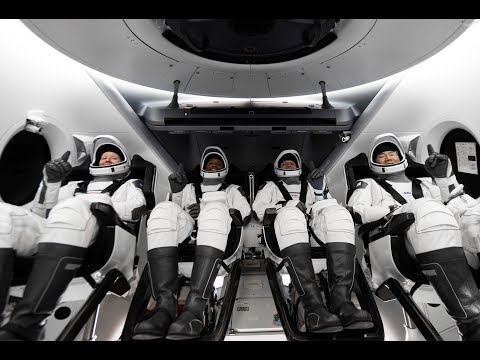SpaceX, the aerospace company founded by Elon Musk, has once again made headlines with its latest spacecraft, Starship. On March 3rd, 2021, Starship Serial Number 10 (SN10) successfully completed its high-altitude flight test and achieved a key milestone in the development of this revolutionary spacecraft. Let’s dive into the details and understand why this event holds immense significance for the future of space exploration.
The Starship program aims to develop a fully reusable spacecraft capable of carrying both crew and cargo to destinations like the Moon, Mars, and beyond. SN10 is just one iteration of several prototypes SpaceX has been iterating on as part of its testing program. However, the fact that it has reached such an advanced stage demonstrates the progress being made in transforming this ambitious concept into reality.
The highly anticipated high-altitude flight test began at SpaceX’s Boca Chica launch facility in South Texas. SN10 lifted off successfully and soared up to an altitude of approximately six miles – higher than its predecessors SN8 and SN9 had reached before. This brought it close to reaching the Kármán line, which marks the boundary between Earth’s atmosphere and outer space.
During ascent, SN10 demonstrated its impressive maneuverability by performing a “belly flop” maneuver. This involved shutting off its three Raptor engines sequentially to control both speed and descent trajectory before reigniting them for landing. This complex maneuver will prove crucial for safe touchdown procedures on other celestial bodies where aerodynamic flight is required regardless of atmospheric conditions.
After reaching peak altitude, SN10 gracefully reoriented itself into a vertical position once again using its onboard thrusters. However, during descent, a problem occurred when one of the Raptor engines was not able to ignite fully due to a malfunctioning methane header tank pressure. This imbalance caused SN10 to crash-land harder than intended, resulting in a spectacular yet explosive ending.
Despite the crash, SN10’s flight test was hailed as a success by SpaceX. The mission successfully demonstrated various key aspects of Starship’s design and validated several critical technologies required for future space exploration endeavors. The unprecedented maneuverability displayed during flight emphasizes the potential versatility of this spacecraft for various missions, from deploying satellites to carrying humans to other planets.
One of the most notable achievements of SN10’s test flight was the preservation of its integrity during landing. While it did not fully succeed this time, it showcased that the vehicle has the potential to be fully reusable, which is a game-changer in terms of reducing costs associated with space travel. SpaceX aims to develop a spacecraft capable of performing multiple flights without requiring extensive refurbishment between each mission – similar to an aircraft.
The successful flight test of SN10 also highlights the iterative nature of SpaceX’s testing program. With each prototype, valuable insights are gained, allowing engineers and designers to make necessary improvements for future versions. Even though SN10 experienced issues during landing, data gathered from this flight will be invaluable in further refining Starship’s design and ensuring higher chances of success in subsequent tests.
SN10’s high-altitude flight test is another step forward in the exciting journey towards more advanced space exploration capabilities. By continuing to push boundaries and challenge technological frontiers, SpaceX is setting us on course for a new era in space travel and colonization. The efforts invested in developing Starship bring us closer to becoming an interplanetary species and fulfilling humanity’s age-old dream of exploring distant worlds.
Elon Musk once stated that if we are not a multi-planet species within this century, civilization could be in great jeopardy. With its impressive progress showcased by SN10’s high-altitude flight test, SpaceX is proving its dedication to making Musk’s vision a reality. Whether it be establishing permanent settlements on Mars or exploring the outer edges of our universe, Starship is poised to redefine the possibilities and transform the future of space exploration as we know it.





